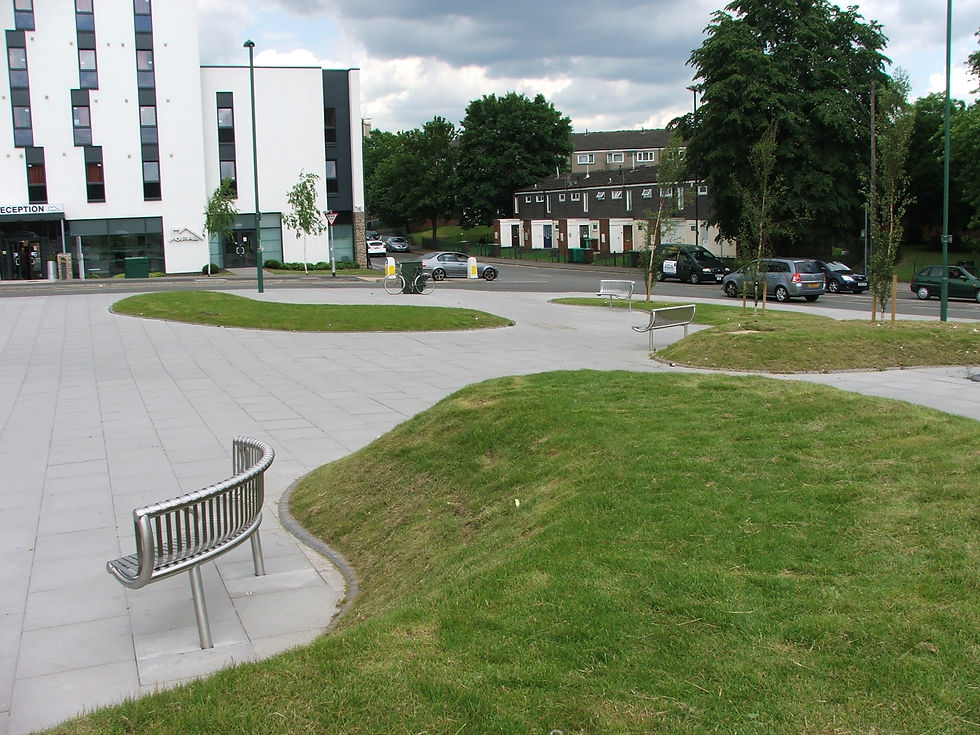

Diatom-inspired Landscaping
Chettles Yard, Nottingham







Images from artist's design development stages
Diatomica, Chettles Yard,
Nottingham
2010
gateway sculpture
The final sculptures, though non-representational, are inspired and informed by the diatoms and micro-organisms found in water samples collected from the River Leen, which flows through this dynamic recreational space. Access to laboratory facilities at BioCity, Nottingham, allowed the artist to observe the diatoms under a microscope during the development phase.
The work aims to connect audiences to the natural resource of water and to celebrate local biodiversity. It also continues the artist’s ongoing interest in diatoms and waterborne micro-organisms.
The installation will comprise four sculptures, each 1.7 metres high, located at a landscaped entrance. Constructed using environmentally friendlier materials, the sculptures form part of an integrated vision developed in collaboration with a landscape architect. The landscaping features grass-covered earthworks—initially created by the artist at miniature scale—which are inspired by the forms of diatoms and other microscopic organisms, creating a visually sympathetic setting for the sculptures. The work seeks to render the invisible visible.
Throughout the research and development period, the artist carried out photographic documentation, drawing, modelling, and environmental experiments and projects, all of which contributed to the evolution of the final design.
Client: OPAL Construction in partnership with Nottingham Trent University (NTU)
Value: £90,00
Dimensions: 4 sculptures 1.7 x 1.7 m
Material: Jesmonite and stainless steel/ integrated landscaping and street furniture
Date: 2011
Design team:
Lewis Hickey Architects
CAD images: Gareth Cain and Jackson Woolley
Robinson Landscaping
Nottingham City Council
Proposed fabricator Richard Arm Casting About NTU
Artist Irene Rogan
Project Management NTU:
Stella Couloutbanis
John Newling
Terry Shave
Student: Lucy Broadhurst
→









Diatoms information: 'Aa major group of eukaryotic algae and are one of the most common types of phytoplankton. Most diatoms are unicellular although they can exist as colonies in the shape of filaments or ribbons. Diatoms are fundamental to the food chain as they take energy from the environment in the form of sunlight or inorganic chemicals and use it to create energy-rich molecules such as carbohydrates. The study of diatoms is of vital importance in the field of nanotechnology but most importantly in relation to this proposal, diatoms are a valuable tool for monitoring environmental conditions and are commonly used in studies of water quality and indicators of environmental change in wetlands and peatlands, - Tracking fish, seabirds, and wildlife population dynamics with diatoms and other liminological indicators’
Above Irene Rogan collecting water scollection from the River Leen and live grass models for a landscaping . Images from her outdoor studio on the site
Left images gathered from journals and science pages.